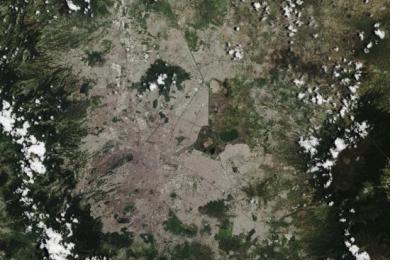Under the annual theme "Towards A Safer Urban Future", the 2nd Resilient Infrastructure Forum took place in Colombia from 4 to 6 June 2019. The Forum aimed to develop a coordinated long-term strategy to overcome challenges posed by disasters, such as severe storms, tsunamis or earthquakes in Latin America and the Caribbean. At the event, UN-SPIDER underlined the benefits of space-based information for understanding the exposure of coastal urban infrastructure to natural hazards and highlighted how land-use changes, which can be observed through a combination of space data and aerial photography, lead to more frequent and more intense floods in cities in the region.
By enhancing the capacity of the region's institutions and private sector to plan, design and implement investments in disaster resilient infrastructure, RIF2019 provides a platform for specialists to support various stakeholders, such as governments or regional agencies to develop resilient strategies and to introduce international technology and service providers.
At RIF2019, UN-SPIDER provided inputs on how the combination of information on exposure derived from Earth observation, information on coastal hazards and vulnerability can be used to improve early warning efforts in coastal areas due to tsunamis and storm surges.
Besides, satellite imagery offers information on the physical infrastructure that is exposed to natural hazards. In coastal areas, this is important to assess the potential impact of a tsunami in coastal cities. Information on exposed elements and critical infrastructure allow to identify the location of highly vulnerable groups and places that congregate vast amounts of people (main bus stands, train stations, public markets, shopping areas, etc). Such information can then be used to develop “impact-based forecasts” and to develop warning strategies (who to warn first, for example) and evacuation routes.
Furthermore, the combination of aerial photography from decades ago and satellite imagery from recent years allows city planners to understand how urban growth is taking place over the decades. In that way, risks and risks drivers can be better understood and mitigated.

